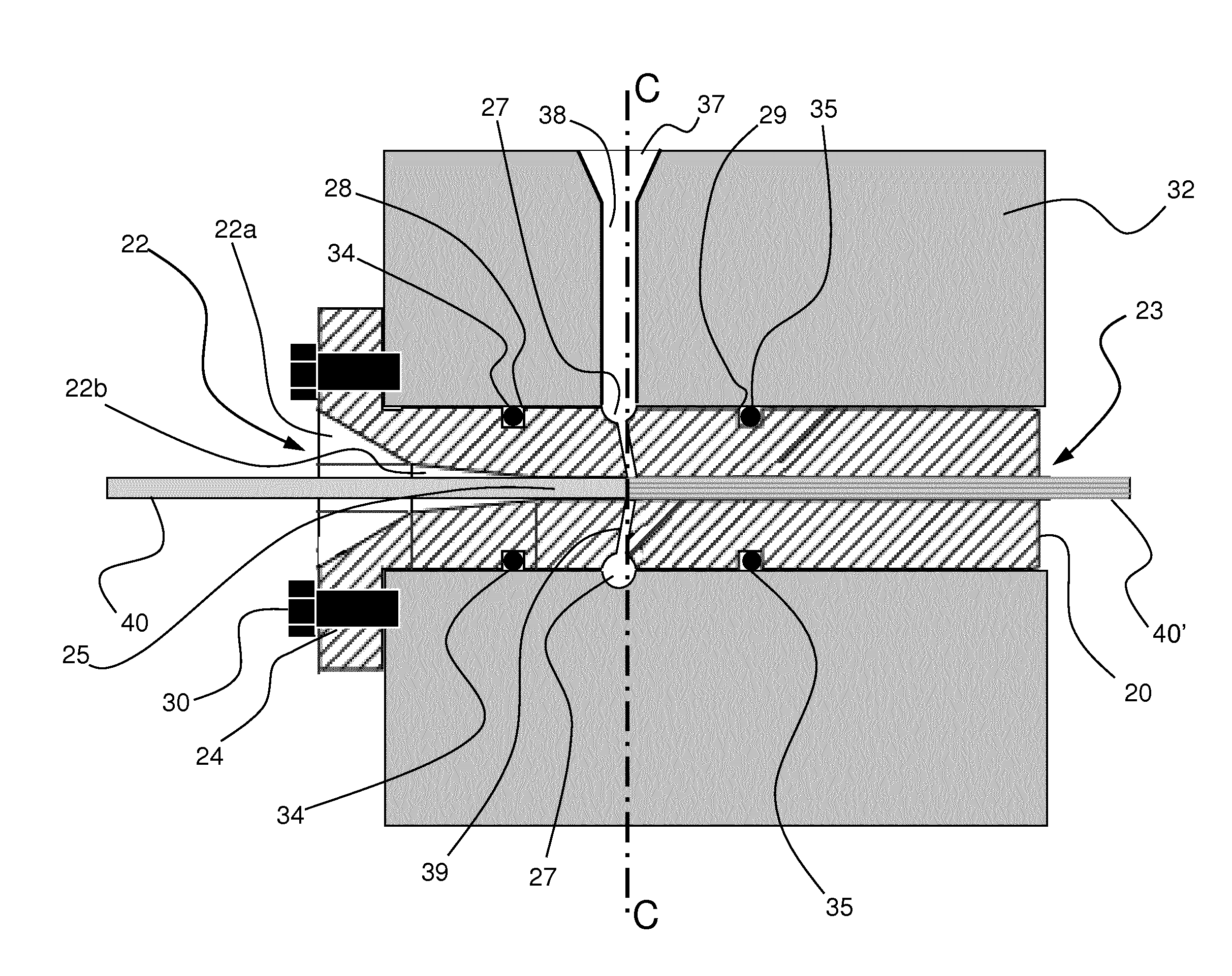Method and device for manufacturing of a fibre-reinforced polymer composition
a technology of fibre reinforced polymer and polymer composition, which is applied in the direction of document inserters, coatings, printing, etc., can solve the problems of difficult to achieve proper distribution, high effort is made on uniform distribution of fibres across pellets or granules, and technological challenges, and achieve the effect of efficient impregnation of strands
- Summary
- Abstract
- Description
- Claims
- Application Information
AI Technical Summary
Benefits of technology
Problems solved by technology
Method used
Image
Examples
Embodiment Construction
[0055]FIG. 1 illustrates a pellet 1 of a long glass fibre reinforced polypropylene (LGF-PP) composition fabricated using a method according to the present invention. Pellet 1 consists of a thermoplastic polymer matrix 3, here polypropylene, forming a sheath visible on the outside. The core of pellet 1 is filled with a plurality of glass fibre filaments 5. Fibre filaments 5 in pellet 1 are usually and preferably aligned with each other. However, the invention is not limited to manufacturing processes wherein the filaments are aligned in the pellets, as the skilled person may appreciate that a certain misalignment of the fibre filaments 5 may be present in pellet 1. The length of glass fibre filaments 5 corresponds to the length of pellet 1. After injection moulding of pellets 1 the original usual alignment of fibre filaments 5 in pellets 1 usually disappears resulting in a more or less random orientation of fibre filaments 5 that are evenly distributed within the polypropylene matrix...
PUM
| Property | Measurement | Unit |
|---|---|---|
| Pressure | aaaaa | aaaaa |
| Pressure | aaaaa | aaaaa |
| Pressure | aaaaa | aaaaa |
Abstract
Description
Claims
Application Information
 Login to View More
Login to View More - R&D
- Intellectual Property
- Life Sciences
- Materials
- Tech Scout
- Unparalleled Data Quality
- Higher Quality Content
- 60% Fewer Hallucinations
Browse by: Latest US Patents, China's latest patents, Technical Efficacy Thesaurus, Application Domain, Technology Topic, Popular Technical Reports.
© 2025 PatSnap. All rights reserved.Legal|Privacy policy|Modern Slavery Act Transparency Statement|Sitemap|About US| Contact US: help@patsnap.com



